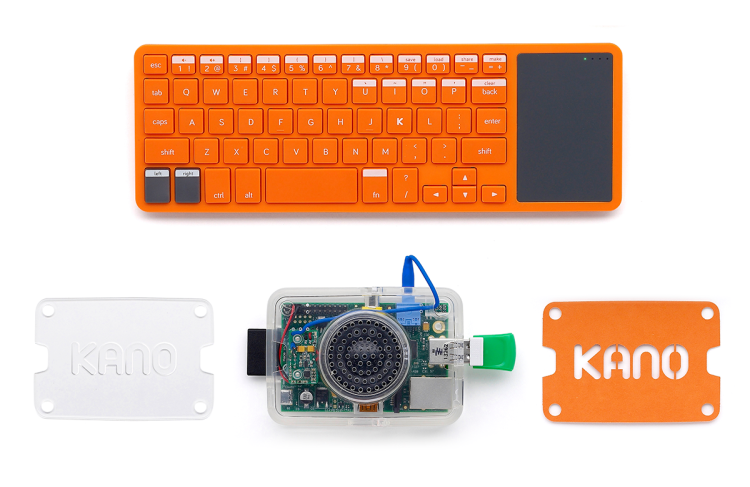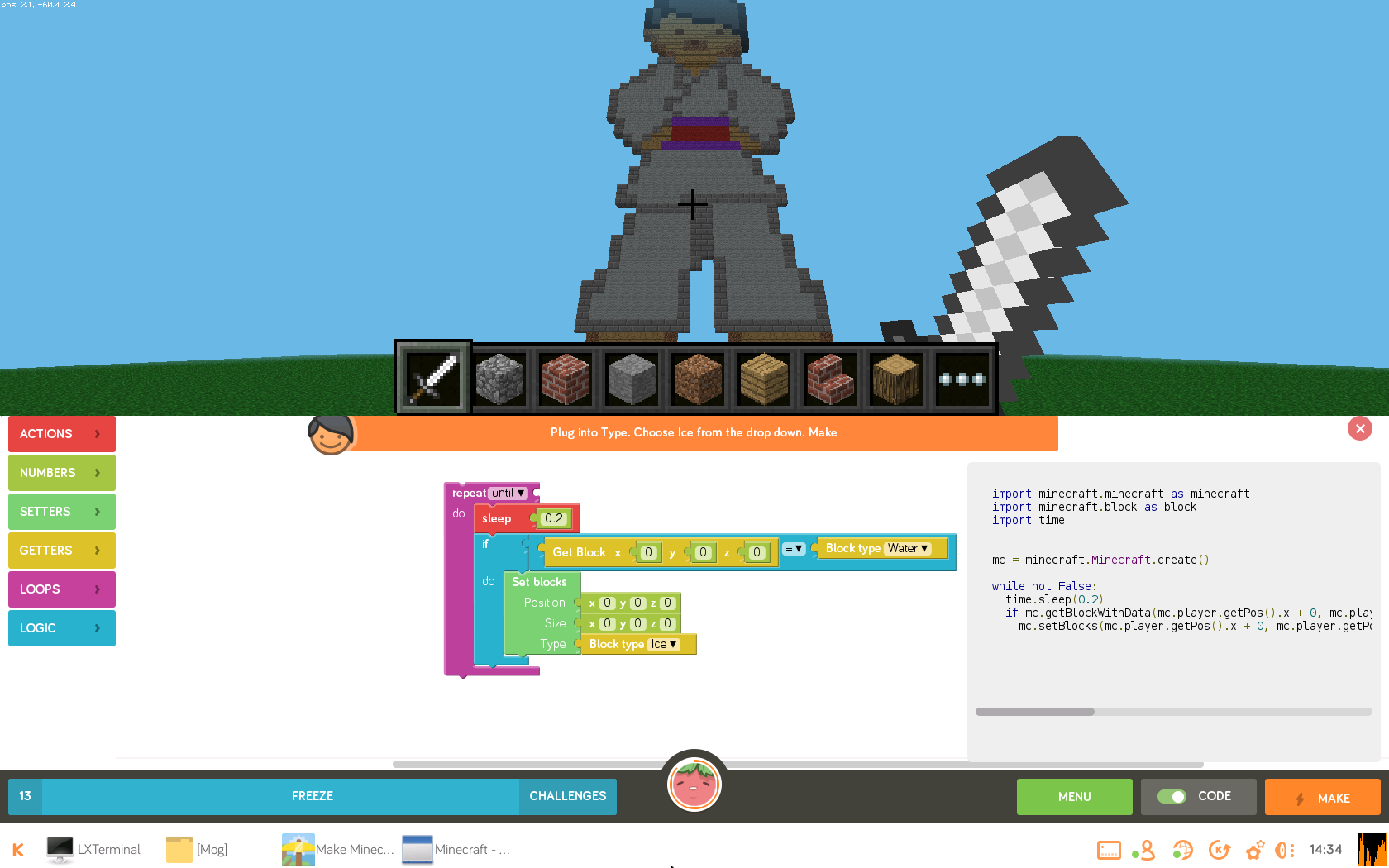Minecraft
One of Kano’s big selling points is the inclusion of a hackable version of Minecraft. It’s a clever mix of Kano Block commands, real code, and gameplay — exactly the sort of thing that’s now finding its way into classroom settings worldwide.
My daughter worked her way through 12 of the 14 introductory quests, which got her making stone tunnels, volcanoes, and giant towers with just a few blocks-worth of instructions.
It was hugely empowering for her, but at times, the Rasberry Pi at the Kano’s heart showed its limited power, taking a little more time to action commands than she’d have liked.
What my kids thought
I sat down to chat with my kids after they’d had time to reflect on using the Kano — using my dictaphone like a proper interview, to my daughter’s delight — and their thoughts on it were pretty interesting.
“We were kind of fighting over who would have their go,” my daughter said. “I really wanted to have another go, but everyone else wanted a go.” Yes, that included me. “And then everyone else stopped so I got to do everything!”
Her high point? “The Kano draw was very good because it was kind of hard at first, but after a while you could make more complex pictures. When you first started, it was really interesting trying to work out how to do everything.”
The worst part? “The music. Nothing in that made sense. To me, it was all just like some numbers, some letters, some lines, some music. And I’m like, how did you do that? It’s just like gobbledygook all over your screen. It doesn’t make any sense.”
And did she feel like she was actually learning to code? “For some of it, I was just following instructions because I really had no clue what to do. But for some of it, I knew what was happening when I did it.”
I asked my son if he thought kids without any computer knowledge could use Kano without adult input. “They could use certain aspects,” he said, “like Kano Blocks, maybe, because it’s all written out for you.”
His low point was definitely the occasional sluggishness of the Rasberry Pi. He’s not super patient, and waiting around for things to happen on screen just didn’t wash with him.
“Personally, I prefer playing games to making games,” he said, “so I was happy that there was a play option [on Minecraft]. I wanted to see what it was like, so I clicked ‘Play Minecraft,’ but I tried to look around and it just stopped. I just left it as it wasn’t actually doing anything. I thought every single tiny movement I did would take me ages.”
I told him that a new Rasberry Pi’s now available — the Rasberry Pi 2 — which supports Kano OS but likely works a lot faster due to its enhanced 1GB of RAM. “It should be called the Blueberry Pi,” he reckoned. But would it make for a smoother experience? “That would be a lot better,” he said.
“I would recommend the Kano,” my daughter said, “but only to certain people. People that are interested in computing and know [a bit] about it.”
“It’s a really nice thing to do with groups of people,” she added. “With your friends at home, or with your family. It’s a nice activity for [children] to do after school.”
Kano’s potential
The Kano is a little device with a lot of potential. It’s already interesting and different enough for kids to start messing around with. But the limitations of 512MB of RAM really do show at times.
Kano has already released an OS compatible with the Pi 2. It would be great to try it out, but at present the Kano kits are only supplied with the older model.
A spokesperson for Kano told me that the team is aware of the issue of processing speed, is addressing this concern, and “will be providing options.” Whether that includes packing in the Pi 2 with the base Kano kit remains to be seen, but it would be great to have the option.
Aside from offering a great hands-on, build-it-yourself approach to kids interested in computing, the strength of Kano really lies in its operating system.
I recently spoke to Kano’s creator, Alex Klein, and asked him about licensing the OS to other devices. He said there were no plans at present, but he pointed out that some people are enjoying streaming Kano to their iPads using an app called VNC viewer. “They think it’s kind of ironic,” he told me.
Klein says that Kano OS will always be free to use on Rasberry Pi, even for people who don’t want to buy the whole kit. “For as long as we’re running Kano OS on the Rasberry Pi, you’re not going to need to buy Kano to use Kano on the Rasberry Pi,” he said. “If you don’t want the full experience, you can go to [the website], download Kano OS for free, burn it on an SD card, and start playing on your Pi.” The same goes for the Pi 2.
“We feel if we can nail an affordable, elegant, creative PC for the whole world — not just the Western world — the commercial opportunities are second,” Klein said. “Those are the afterthought. We’re mission-driven. We actually feel we can change the landscape and give a lot of people a new look at computing. Hopefully, from there, business success will follow.”
It’s a noble aim, and Kano is certainly offering something new and innovative for kids who want a challenge.
But I’ll leave the last word on that to my daughter:
“It’s a bit like if you’re playing a game and you always make the same mistake, but then you think about a person that’s amazing at this [game] — they’ve done this before and they’ve made the same mistake as me, and they learned and moved on. So that’s what you’ve got to do in Kano.”
Kano loaned VentureBeat a kit for testing, and we’re now in the process of returning it.
VentureBeat's mission is to be a digital town square for technical decision-makers to gain knowledge about transformative enterprise technology and transact. Learn More




